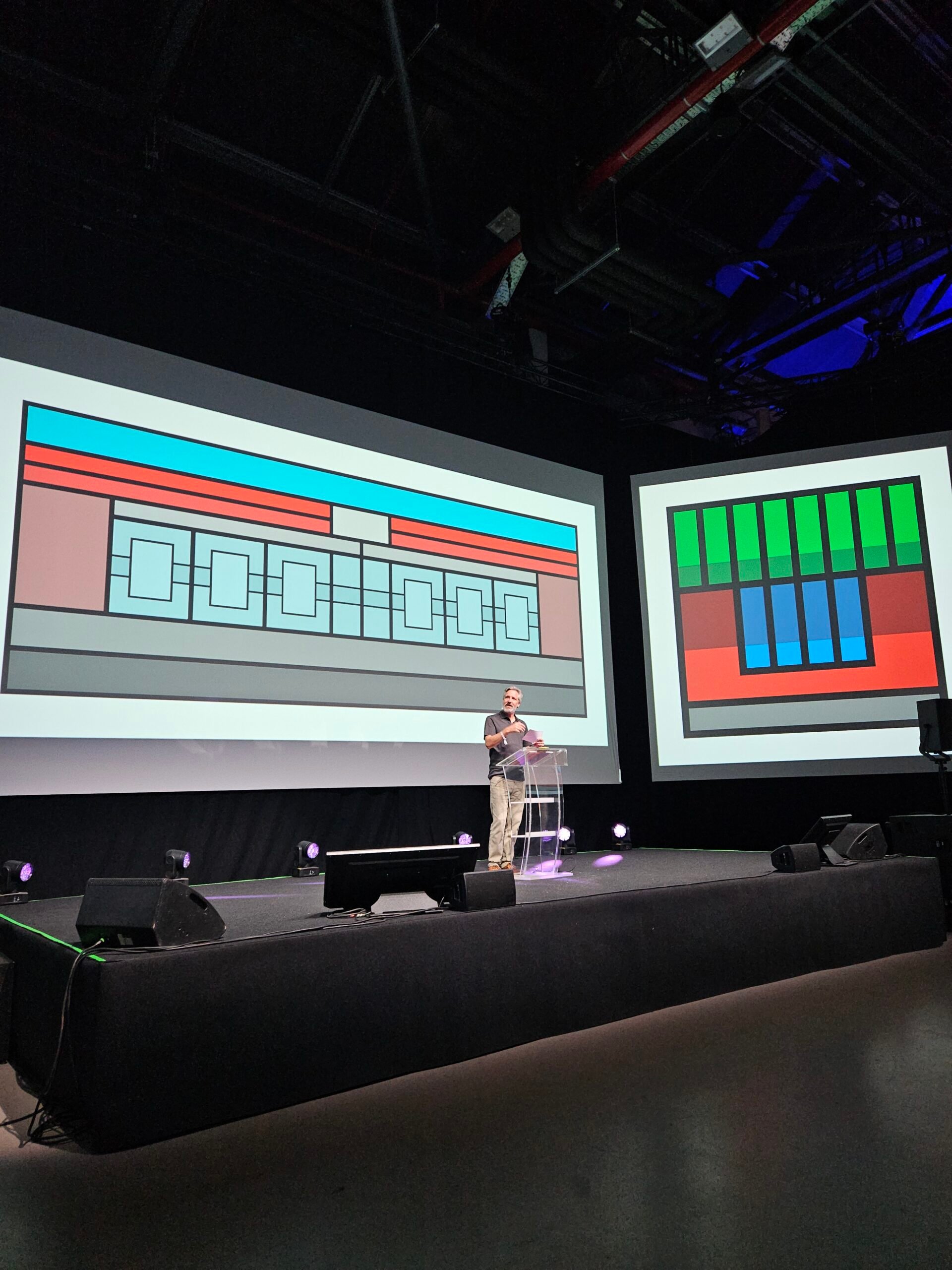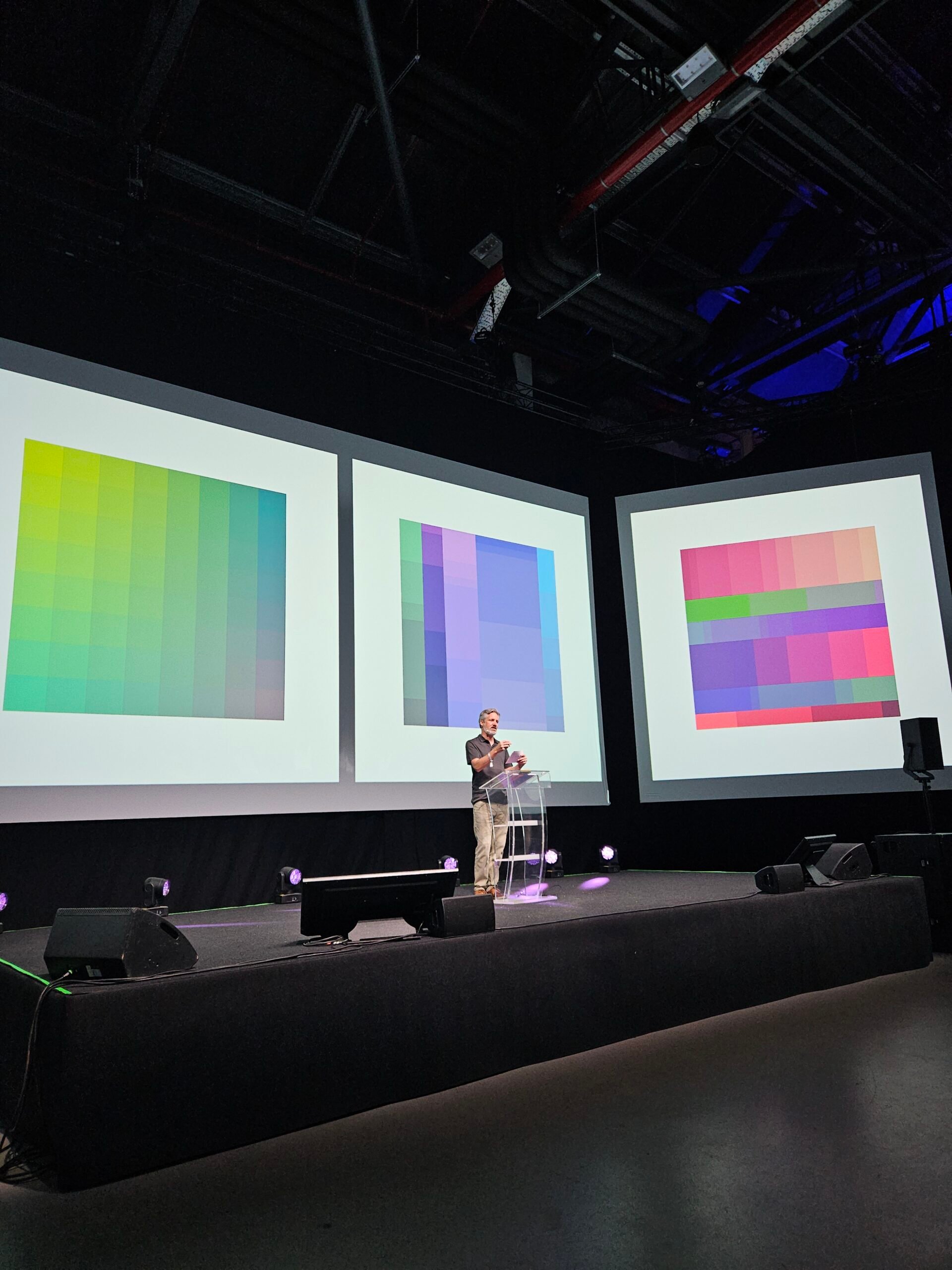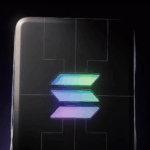From traditional painting to NFT, American artist Jeff Davis has built a path that combines mathematical rigor, codes and colours. The evolution that made him an important figure in the world of Cryptoart.
” `html
From classrooms in Chicago to discovering color theory
” `
Jeff Davis’ journey has deep academic roots. After studying at the Chicago Institute of Art, he contacted Joseph Albers’ theory, particularly through the famous colour interaction. This analytical approach to colour based on relative perception and systematic composition had a lasting impact on his art.
Davis began delving into a variety of color systems, such as Munsell and Ostwald, and began experimenting with the use of color spacing, meaning a uniform visual transition between two shades. For him, colour was by no means an ornament, but a supporting structure of the piece.
Architectural abstraction as a color container
In his first artistic stage, Davis worked on architecture-inspired forms: linear structures that evoke doors, windows, and walls. Although these elements had no representative features, they served as geometric spaces for exploring colors.
The approach was very accurate. The piece was designed digitally, but was handcrafted with adhesive tape and acrylic paint. Gradations of each colour were studied to achieve harmony and contrast that matched theoretical schemes studied at the academic level.
Digital transition: printing and absolute control
With advances in printing technology in the early 2000s, Davis began to produce works directly as digital prints. This transition marked a turning point. Computers were no longer design tools, but their main medium of expression.
Using graphics software, he can calculate chromatic intervals very accurately and use x- and y-axis transitions to create complex harmonies between complementary colors and two-dimensional scales. Each work was the result of a reasonable plan, and by chance nothing was left.

Generated Turning Point: When Art Meets NFT
In 2009, Davis decided to explore a new dimension: the dimension of generative art.
Research processing, a visual programming language, and create algorithms to generate your own work. The goal is clear. It introduces opportunities as an active part of the creative process and delegates some formal choices to the code.
This paradigm shift is freed from representation and architecture constraints. The work becomes a pure algorithmic abstraction built on rules, variables, and parameters. Colors are converted from aesthetic objects to dynamic systems, computationally and changeable in real time.
NFT: Discovering a New Frontier
Real Leap occurs in 2019 when Jeff Davis discovered the NFTS. Thanks to platforms like Art Block, the artist can ultimately combine his generative practice with native digital forms.
The NFT represents the ideal framework for Davis for his art. They eliminate the limits of printing, physical space, and reproduction. Each collection can generate hundreds or thousands of variations. Each one is unique, but consistent with a well-defined aesthetic logic.
Physical collaboration and new dimensions
Davis will also begin working with Bright Moments, a project that brings NFT art to physical galleries around the world. On these occasions, the artist introduces new variables to his work: Time. Therefore, the vertices are born. This is a generative task in which colors not only align themselves in space, but also slowly change over time and rotate along the color wheel.

This is the first time Davis has introduced animation to his work. The work is continuously transformed to create a fluid, immersive visual experience where viewers witness the evolving process rather than simply observing the painting.
Jeff Davis is an artist who was able to combine science and creativity to translate color theory into computational language. From manual painting to generative NFT, his journey represents a consistent, visionary evolution.
In the landscape of blockchain art, Davis is a reference for those who think of technology not just as a means, but as a new art grammar. His research on colour, shape and time paves the way for the future where algorithms are artists and works are processes.














